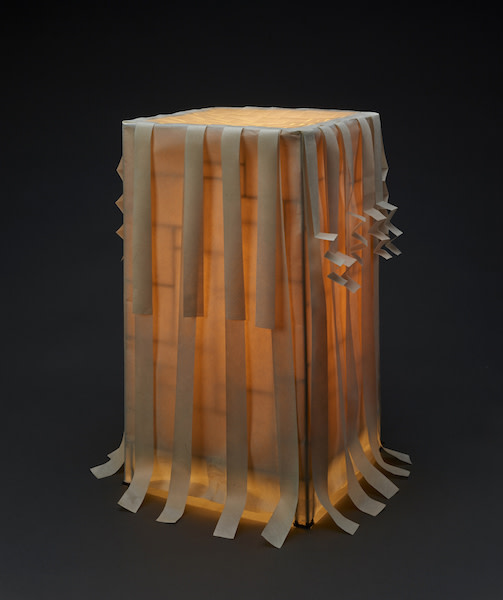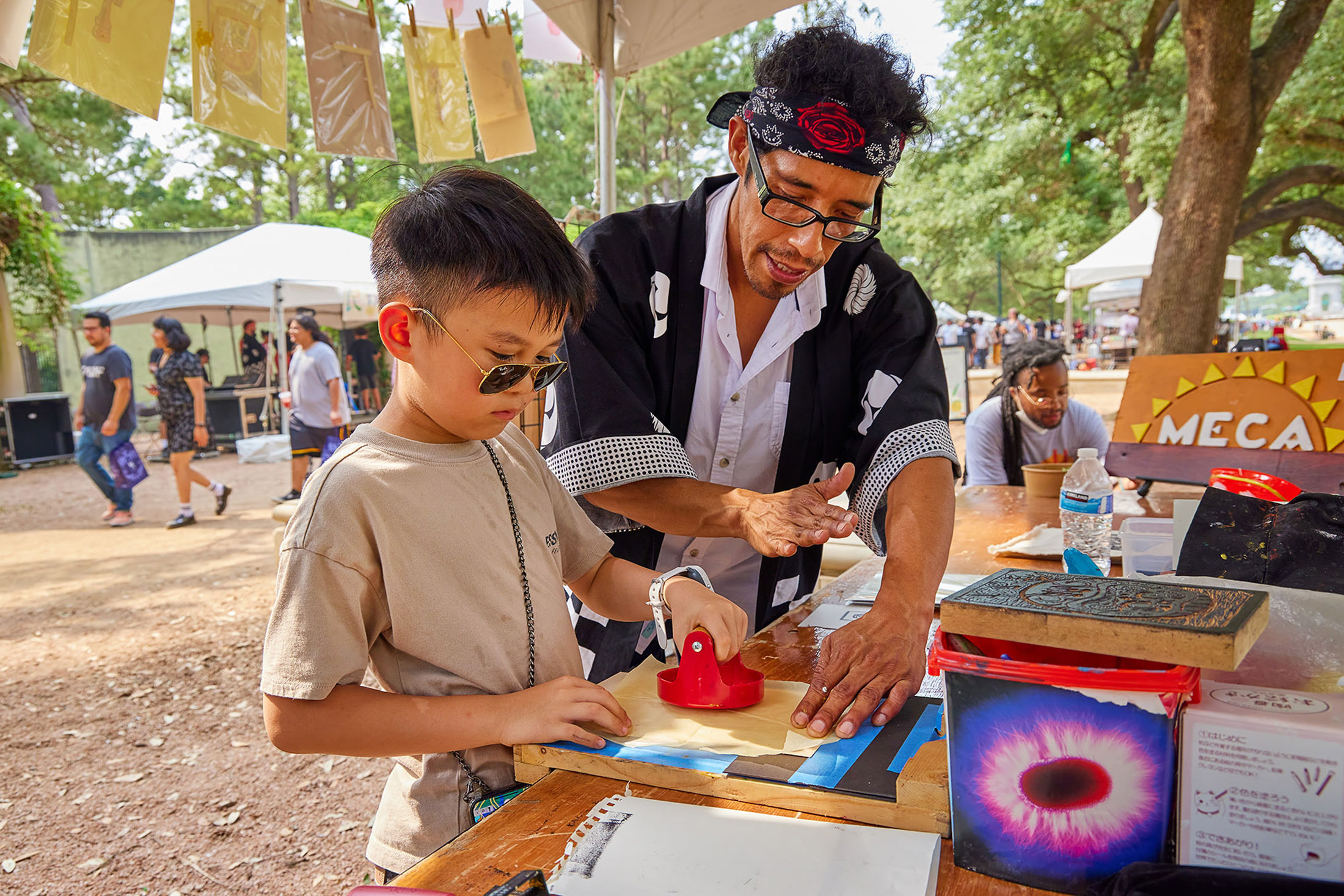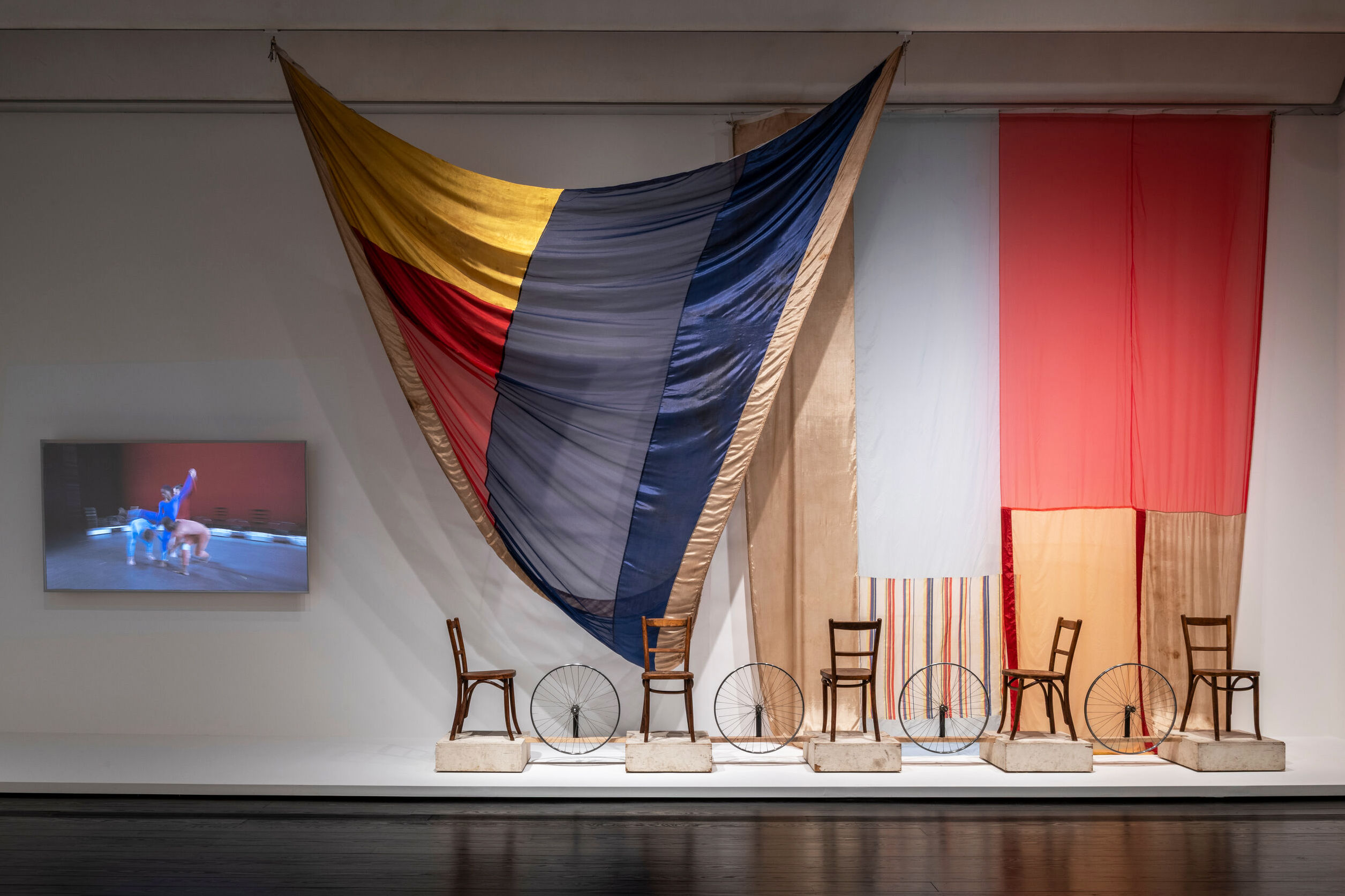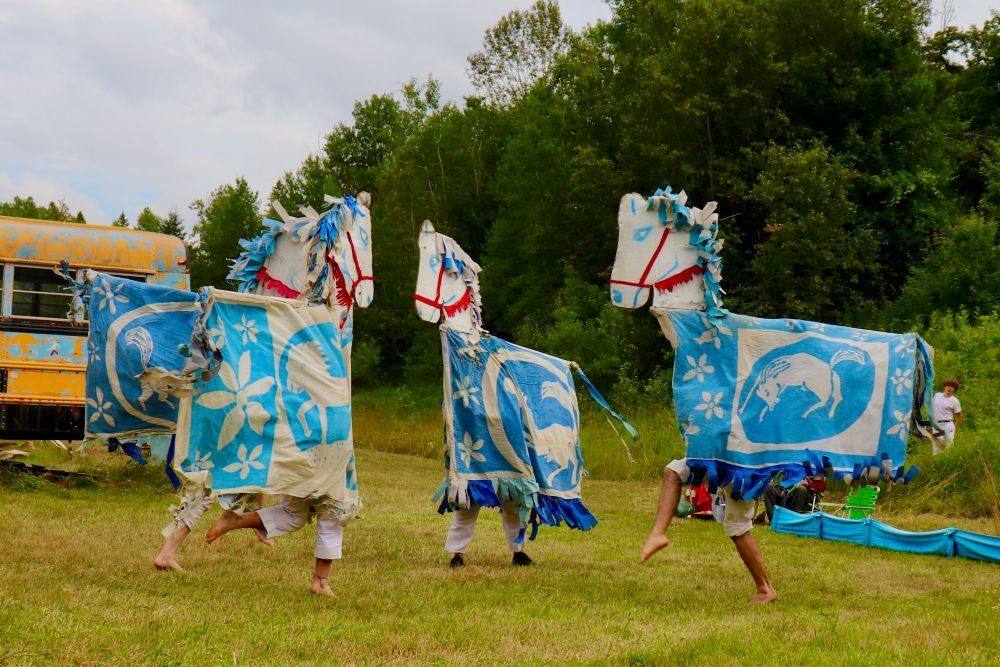A Little Bit Softer Now

Mari Omori, akari/paper lantern
In the gardens of Ryoan-ji Temple in Kyoto, Japan, the phrase “ware tada taru (wo) shiru” is inscribed on a stone water basin. Representing purification, many people go to the shrine to contemplate, meditate and find solace in the lush surroundings. The latest exhibition at the Japanese America Society, titled I Am Content with What I Lack (the English translation of the stone-etched words), featuring four Houston-area artists, explores different ways to represent this theme.
“We wanted to focus on the Japanese garden’s transformative and peaceful experience,” says Museum of Fine Arts, Houston’s Asian Art Curator Christine Starkman, who curated the exhibit in conjunction with JASH. I Am Content with What I Lack, which is displayed from this Friday through Saturday, Sep. 19, is more about the concept than the artist, she adds. Starkman, who’s headed the MFA’s Asian Art department for 15 years, brought in four Houston artists of Japanese roots to help present the idea of peace through their respective mediums. “When people come in we hope they contemplate and meditate; go to another place.”
Terry Hagiwara’s glazed stoneware tea bowls begin the traditional ceremony-like invitation into the exhibit, offering visitors the opportunity to begin to clear their minds. Masaru Takiguchi’s carved and serpent-like “Night Ocean,” made from black granite, sits in the garden among paper lanterns hung by Mari Omari. The complete space is designed by local architect Keiji Asakura, who kept the ideas of symmetry and line in mind when working with Starkman, who stressed (ironically enough) meditation and peace of mind.
“For the ceramics, it’s a reminder of a tea ceremony and of nature. For paper, its purity reminds you of peace. It all comes back to this idea of activating calmness and emptiness,” notes Starkman.
Japanese gardens began popping up as sacred spaces dedicated to Shinto deities and recreations of Buddhist paradise. The gardens were meticulously curated, attempting to capture the sublime with natural elements within an imposed closure. Gardens were typically outlined as lush landscapes, mixing small ponds, quietly babbling brooks and ample greenery.
“It takes you away from daily life, and that’s what we wanted to achieve,” says Starkman. “Japanese gardens help people experience nature—to sit and empty their minds.”
I Am Content with What I Lack. Sep. 11–19. Free. Japan America Society of Houston, 4411 Montrose Blvd. 713-963-0121. jas-hou.org




